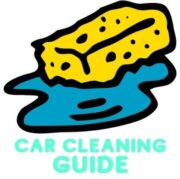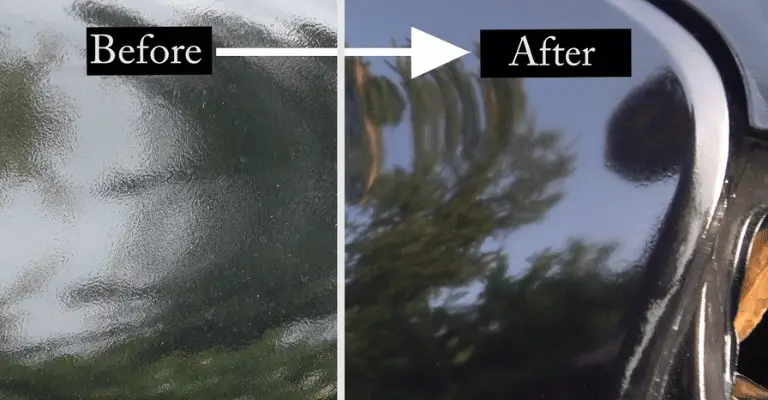Last Updated on November 25, 2023 by Chase Manhattan
If you’re a car enthusiast or even a casual vehicle owner, you’ve likely come across the term ‘clear coat’. But what exactly is it, and why is it so essential for your car’s aesthetic appeal and longevity? This comprehensive guide explores the ins and outs of clear coat on cars, its importance, how to maintain it, and much more. Let’s get to it!
- Can You Touch Up Clear Coat? Yes and No (Here’s Why) - November 25, 2023
- How To Wax A Car By Hand: A Comprehensive Guide - November 14, 2023
- How Many Layers of Ceramic Coating Is Best for Longevity? - November 9, 2023
Clear coat refers to a transparent, colorless layer of paint applied over the colored base coat on your vehicle’s exterior.
This glossy, durable, finish not only enhances your car’s visual appeal, giving it a wet, deep, and shiny appearance, but it also serves several functional roles.
A clear coat layer’s primary purpose is to protect the underlying colored paint from various damaging factors.
Quick Navigation
Is Clear Coat Necessary?
Absolutely! Clear coat is a vital component of any modern paint job. It’s not just about the glossy smooth finish that makes your vehicle look brand new and glamorous. The benefits of clear coats extend beyond the aesthetic realm.
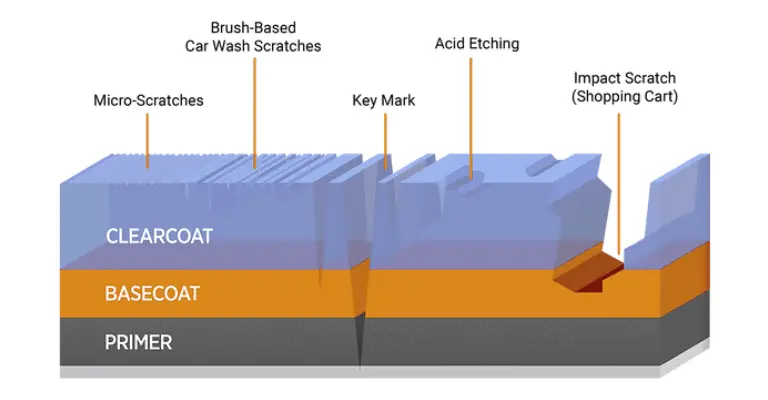
Benefits of Clear Coats (Why It’s Necessary)
There are three primary benefits of clear coats that we’ll cover in this section:
- UV Ray protection
- Scratch resistance
- Enhanced aesthetics
1. Protection from UV Rays
One of the major advantages of having a clear coat on your car is its ability to provide a shield against the sun and its harmful ultraviolet (UV) rays.
Exposure to UV rays can cause the car’s paint to fade, leading to a dull and old-looking exterior. However, a clear coat prevents this, maintaining the paint’s vibrancy for a more extended period.
Read more: Best Clear Coat for Headlights
2. Resistance to Surface Defects
Clear coats can also protect your vehicle from minor surface defects, fading, and spotting caused by acid rain.
Such shallow defects can be buffed out without damaging the paint, provided your car has a protective layer of clear coat.
3. Enhances the Beauty of Your Car
Aside from its protective attributes, a clear coat also improves your car’s appearance. It gives a glossy, shiny, look to your car’s painted exterior, making the color look deeper and more vibrant.
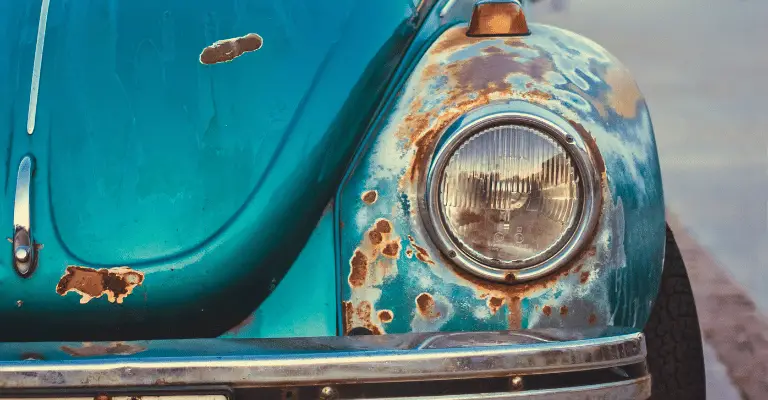
What Happens Without A Clear Coat? (Clear Coat vs No Clear Coat)
Without a clear coat, your vehicle is left vulnerable to various damaging elements like UV rays, bird droppings, acid rain, road tar, and other pollutants. These can gradually eat away the paint, leading to a dull and worn-out appearance.
Without this extra layer of protection, your vehicle’s paint can easily get scratched, causing more severe damage to your car’s aesthetic appeal.
Focusing more on the aesthetic front, a car without a clear coat will lack the glossy finish that most car owners desire. Instead of a gloss appearance, it will have a matte finish, which may not be as appealing to many.
Related articles:
> How to stop rust bubbles from spreading
> How To Protect Paint Without Clear Coat 101
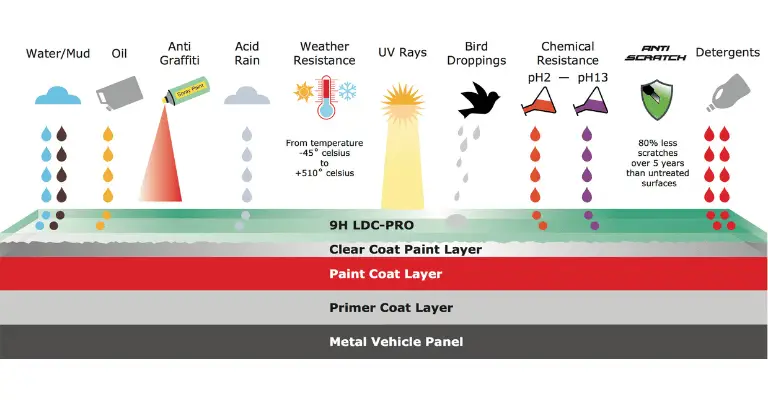
How To Protect Your Clear Coat
Maintaining the clear coat on your car may seem like a challenging task, but it’s simpler than you think. Here are some effective ways to protect your car’s clear coat:
Read more: What is clear coat protectant?
1. Regular Washing
Washing your car regularly is the first step to maintaining your clear coat. This simple practice helps remove dirt, grime, and other harmful contaminants, that could harm the clear coat. Ideally, your car should be washed at least once a month for the best results.
Proper Washing Practices
While washing your car is essential to maintaining the clear coat, it’s equally important to do it correctly. Instead of opting for automatic car washes, which often use abrasive brushes, consider washing your car by hand. This allows you to focus on particular areas with extra dirt and grime.
Moreover, avoid using harsh chemicals or abrasive materials during the wash. Instead, opt for car-specific soaps and soft cloths. Rinse your car thoroughly after washing to ensure no soap, dust, or other residues are left on the surface.
2. Use of Clay Bars and Lubricants
Clay bars are an effective tool for removing loose debris from your car’s surface without causing any scratches. Before using a clay bar, spray a lubricant on the surface and then gently slide the bar on top. This practice can be done twice a year or more, depending on the amount of debris your car is exposed to.
3. Avoiding Direct Sunlight
Although clear coats are designed to protect your car against UV rays, they are not entirely invincible. Continuous exposure to the sun can cause the clear coat to deteriorate over time. As such, it is recommended to park your car in shaded or covered areas as much as possible.
Related: Can You Touch Up Clear Coat? Yes and No (Here’s Why)
4. Paint Sealants (Waxes, Ceramic Coatings, Paint Protection Film, Etc,.)
In addition to regular washing and waxing, other paint sealants, like ceramic coatings or paint protection films, can offer superior protection for your car’s clear coat. While most people focus solely on waxes, these other – more permanent – alternatives are fantastic options as well.

Here are my three favorite sealant methods that we’ll discuss in this section:
-
applying high quality waxes
-
installing paint protection film
-
installing a ceramic coating
Now, let’s break them down!
Supplementary Information: How To Protect Car Paint
Applying Quality Wax
Applying a high-quality wax on your car is another effective way to protect your clear coat. Waxing provides an additional layer of protection on top of the clear coat, effectively safeguarding the base coat from potential damage.
Paint Protection Film
Paint protection film, or commonly referred to as PPF, is a thin layer of thermoplastic urethane that adheres to the car’s surface, providing a robust protective shield.
The paint protection film acts as a paint sealant to protect the clear coat. The protective film essentially creates an invisible barrier between the clear coat and any potential hazards, helping to keep your car looking pristine and shiny.
Ceramic Coatings
With a ceramic coating applied, your car’s surface becomes hydrophobic, which means it will repel water and its associated contaminants effortlessly. This leaves your vehicle with a sleek, glossy finish.
Ceramic coatings are composed of nano-ceramic particles that form an incredibly hard shield, protecting the clear coat from damaging elements such as UV rays, bird droppings, acid rain, and harsh chemicals.
This protective layer is also resilient to heat and scratches, thereby improving the durability of your car’s exterior. The bond ceramic coatings form with the clear coat is semi-permanent, meaning that it will last for years rather than months, as is the case with regular wax treatments.
Related article: How much is ceramic coating?
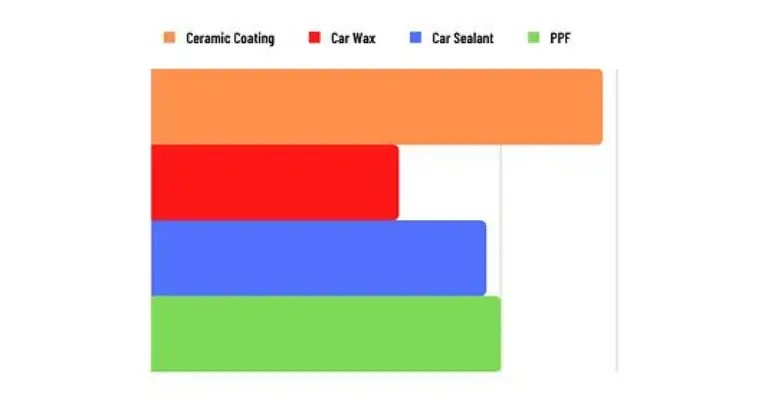
FAQs
1. Can clear coat prevent scratches on my car?
Yes. Clear coat acts as a protective layer on the color coat of your car, reducing the risk of minor scratches on your vehicle’s colored paint.
2. Can clear coat fade or lose brightness?
While the clear coat itself has no color and therefore can’t fade, continuous exposure to the sun’s heat and UV radiation can cause it to become dull.
3. Can I apply clear coat myself?
While it is possible to apply a clear coat yourself using an aerosol spray can or paint gun, it’s recommended to leave major tasks like this to professionals to avoid unintentional damage to your car’s paint.
4. How often should I wash and wax my car to protect the clear coat?
Ideally, your car should be washed at least once a month and waxed every three months to maintain the clear coat.
5. What happens if my clear coat starts to peel?
If your clear coat starts to peel, it’s essential to address the issue immediately. If left untreated, the peeling can worsen, causing significant damage to your car’s paint. In such cases, you may need to have the clear coat reapplied by a professional.
Wrapping Up
In conclusion, the clear coat is a crucial element of your car’s paint job. It not only enhances your car’s aesthetic appeal but also serves as a protective shield against various damaging elements. Therefore, it is essential to maintain your car’s clear coat through proper washing and waxing practices. Additionally, using other paint sealants like ceramic coatings can offer extra protection, ensuring your car maintains its glossy finish and vibrant color for years to come.
